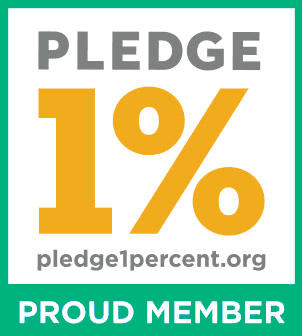Amur Leopards Triple in Population as Conservation Efforts Pay Off
Affiliate Disclosure
Hey fellow impactful ninja ?
You may have noticed that Impactful Ninja is all about providing helpful information to make a positive impact on the world and society. And that we love to link back to where we found all the information for each of our posts.
Most of these links are informational-based for you to check out their primary sources with one click.
But some of these links are so-called "affiliate links" to products that we recommend.
Why do we add these product links?
First and foremost, because we believe that they add value to you. For example, when we wrote a post about the environmental impact of long showers, we came across an EPA recommendation to use WaterSense showerheads. So we linked to where you can find them. Or, for many of our posts, we also link to our favorite books on that topic so that you can get a much more holistic overview than one single blog post could provide.
And when there is an affiliate program for these products, we sign up for it. For example, as Amazon Associates, we earn from qualifying purchases.
What do these affiliate links mean for you?
First, and most importantly, we still only recommend products that we believe add value for you.
When you buy something through one of our affiliate links, we may earn a small commission - but at no additional costs to you.
And when you buy something through a link that is not an affiliate link, we won’t receive any commission but we’ll still be happy to have helped you.
What do these affiliate links mean for us?
When we find products that we believe add value to you and the seller has an affiliate program, we sign up for it.
When you buy something through one of our affiliate links, we may earn a small commission (at no extra costs to you).
And at this point in time, all money is reinvested in sharing the most helpful content with you. This includes all operating costs for running this site and the content creation itself.
What does this mean for me personally?
You may have noticed by the way Impactful Ninja is operated that money is not the driving factor behind it. It is a passion project of mine and I love to share helpful information with you to make a positive impact on the world and society. However, it's a project in that I invest a lot of time and also quite some money.
Eventually, my dream is to one day turn this passion project into my full-time job and provide even more helpful information. But that's still a long time to go.
Stay impactful,
At Impactful Ninja, we curate positive and impactful news for you. Follow us on Google News or sign up for our free newsletter to get these delivered straight to your inbox—just like our expert roundup below!
📰 The quick summary: Amur leopard populations have rebounded from just 25 individuals to approximately 130 in Russia alone, marking a significant recovery for this critically endangered big cat species.
📈 One key stat: The Amur leopard population has increased nearly threefold since conservation efforts began, with 130 individuals now living in Russia, the highest density recorded in 10 years of monitoring.
💬 One key quote: “It was only the creation of the national park that set the conditions for these cats to recover,” Aleksandr Rybin, large carnivore specialist for ANO WCS, told Mongabay.

1️⃣ The big picture: Amur leopards, one of the most endangered leopard subspecies in the world, are making a remarkable recovery in Far East Asia. Once reduced to approximately 25 individuals in the wild due to poaching, forest fires, and habitat loss, their population now stands at about 130 in Russia alone. This recovery stems from decades of conservation work, including establishing protected areas and strong wildlife law enforcement. Scientists have documented the population’s growth through extensive camera trap monitoring, showing leopards moving between Russian and Chinese territories.
2️⃣ Why is this good news: This population rebound demonstrates that with proper protection, even critically endangered species can recover from the brink of extinction. The creation of Land of the Leopard National Park in 2012 provided essential habitat protection, covering all breeding areas and 72% of suitable habitat in Russian territory. Conservation efforts including fire management, anti-poaching measures, and simultaneous recovery of prey species created conditions for the leopards to thrive. International collaboration between Russia and China has been crucial, as these animals frequently cross borders, showing that transboundary conservation approaches work.
3️⃣ What’s next: Despite progress, genetic diversity remains a concern due to the population’s previous severe decline. Russian conservation plans aim to relocate leopards from zoos to increase genetic diversity in the wild population. Continued international collaboration will be essential to ensure the long-term survival of this subspecies.

Read the full story here: Mongabay – Amur leopards, once nearly extinct, are making a comeback in Far East Asia















